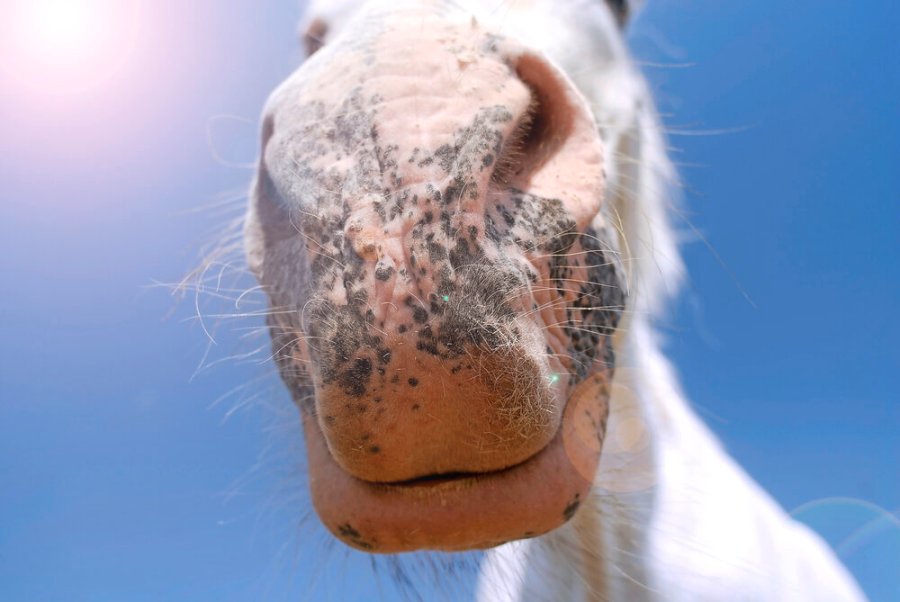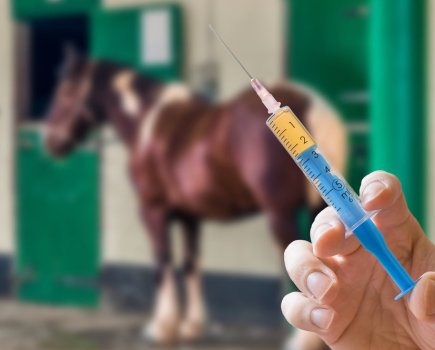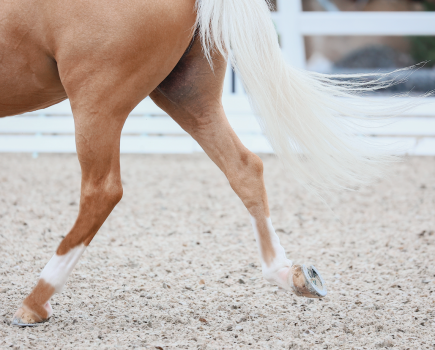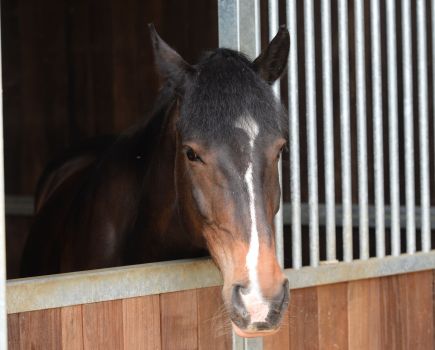Being outside in the sunshine has plenty of benefits. It lifts our spirits and allows us to soak up vital vitamin D, but, as the old adage goes, ‘everything in moderation’. As with humans, horses have varying tolerances to UV rays, meaning that some can cope with sunshine better than others, so with warmer weather comes an increased risk of sunburn and photosensitisation. Vet Leona Bramall explains how the abnormal reaction of the skin to sunlight can be managed.
Simple sunburn occurs when the skin becomes red and scaly following excessive exposure to UV light. As in humans, the severity of the damage to horses depends on the strength of the radiation and the individual’s skin sensitivity. Light-coloured skin is particularly prone due to a lack of melanin pigment which absorbs UV light and scatters the radiation. Hairless skin will also be more severely affected. The muzzle is the area most commonly affected.
Cause
Photosensitisation occurs when photodynamic agents are deposited in the skin, after which they are exposed to and absorb ‘normal’ amounts of UV light. Three forms are recognised and horses suffer from types 1 and 3.
Type 1 occurs after they have eaten preformed photodynamic agents (found in St John’s wort, buckwheat, perennial ryegrass and clover, to name but a few).
Type 3 occurs in advanced liver disease when the photodynamic agent phylloerythrin, which is normally detoxified by the liver, enters the bloodstream and accumulates in the skin. The subsequent inflammatory reaction after the photodynamic gent has been exposed to UV light is characterised by reddened skin that may be painful and itchy. The affected skin may also become ulcerated and crusty. The degree of damage is out of all proportion to the level of UV exposure. Similar to sunburn, lesions generally occur on the light-coloured skin of the muzzle and the back of the pasterns.
Horses with type 3 also show clinical signs consistent with advanced liver disease/ failure, including abnormal mental activity and other neurological signs, reduced appetite, weight loss and/ or jaundice. Blood tests will help with the further investigation of liver disease, while a liver biopsy will sometimes be undertaken.
Treatment
Mild cases of sunburn and sensitivity generally resolve themselves provided further exposure to UV light is prevented and the skin is given a chance to heal. More severely affected horses will require the attention of a vet, as well as the application of topical medications (usually steroid-based creams).
Treatment for type 1 photosensitisation is based on eliminating exposure to photodynamic agents in the first place, in addition to the treatment and preventative measures you can employ for sunburn.
Treatment for type 3 involves further investigation and treatment of the underlying liver disease/ failure, but unfortunately the prognosis is poor.
Prevention
Excessive exposure to sunlight can be avoided by stabling during intense periods, as well as using a water-repellent sunblock and considering putting on a face shade mask, which includes a shade to cover the sensitive muzzle area.
Meet the expert: Leona Bramall MVB CertAVP(EM) MRCVS graduated from University College Dublin before completing an internal medicine fellowship at Hagyard, Kentucky, and a hospital internship at Leahurt. She is an RCVS Advanced Practitioner in equine internal medicine. Her primary areas of interest lie in dermatology and gastrointestinal disease.
Receive six issues of Your Horse magazine for just £15!









